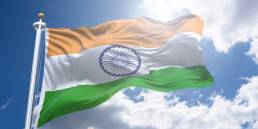As we in Northern Ireland mark the Centenary of the Partition of Ireland which created two states on the island, we also remember the remarkable events of Indian Partition seventy-five years ago.
The end of the British Empire in India in August 1947 resulted in the creation of two separate states of India and Pakistan. The division was based on religious lines, a Muslim majority in Pakistan and a Hindu majority in India. Pakistan itself was split into two parts in the east (East Bengal, which became Bangladesh in 1971) and in the west (western Punjab). This event was to result in the biggest mass migration in history. Over 18 million people migrated to join their particular religious majority. At least a million people died in communal violence in the process.
There is much historical debate as to why partition was accompanied by so much bloodshed. Was it related it to the speed at which the British got out of India? Clement Attlee’s new Labour government in 1945 was keen to grant independence, was this related to the fact they could not afford to support and finance an empire after the war?
The British promised to leave India by July 1948, but the Viceroy Louis Mountbatten moved this forward to August 1947. Sir Cyril Radcliffe headed the boundary commission which draw up the border between India and Pakistan. According to historian Ayesha Jalal, ‘it was rather an arbitrary line, which in some instances cut villages into two’.
It seems that there were not sufficient plans for the administrative operation entailed in partition. The British left a situation of civil unrest and religious tension which was very destabilising for the new governments. Kashmir is still an unresolved issue and remains a source of conflict between India and Pakistan.
Related Posts
16/08/2021
Putting Partition on the Map
The project will use state of the art data visualisation to help us…
15/08/2021
Happy Independence Day India
We wish all Indian people around the world especially those here in…
14/08/2021
Happy Independence Day Pakistan
We wish all Pakistani people around the world especially those here in…



